Did you know that some of the world’s greatest literary works were created under unexpected circumstances? When we picture classic authors, we often imagine them at their desks, quill or typewriter in hand, effortlessly spinning tales of beauty and brilliance. But the reality is that many famous authors had to overcome incredible challenges to complete the masterpieces we know and love today. So, in the spirit of celebrating some little-known trivia, let’s dive into the fascinating world of these literary legends.
Take James Joyce, for example. Renowned for his innovative style and complex narrative techniques, Joyce’s works challenge readers today. But here’s a bit of trivia that many people don’t know: In the later years of his life, as his eyesight began to fail him, Joyce relied on others, including fellow writer Samuel Beckett, to help him complete his final novel, Finnegans Wake.
Joyce’s poor eyesight had plagued him for years, and by the time he began working on Finnegans Wake, it was clear that he would need assistance. Samuel Beckett, a close friend and admirer of Joyce, was among those who helped him. Beckett would often transcribe Joyce’s dictations as his vision deteriorated to the point where reading and writing became a monumental challenge. Finnegans Wake is already famous for its dense, intricate language, and it’s amazing to think that such a complex text was completed with the help of others’ eyes and ears. This collaborative effort highlights the incredible community surrounding writers, even the most solitary ones.
Regarding eyesight, Joyce wasn’t the only author who struggled with vision issues. Some of the most famous authors in history were known for their iconic glasses! Consider Virginia Woolf, who was rarely seen without her round spectacles, or T.S. Eliot, whose wire-rimmed glasses symbolized intellectual sophistication. And let’s not forget about Marcel Proust, author of the monumental In Search of Lost Time, who spent much of his later life in bed, writing with the help of thick, rimmed glasses. For these authors, their glasses were more than just a tool—they were almost a part of their writing persona!
Everyone knows Agatha Christie as the Queen of Crime, but not everyone is aware of one of the strangest mysteries of her life. In 1926, at the height of her popularity, Christie disappeared for 11 days. No one knew where she was—not her family, not the police, and not even her husband, who was left wondering if his famous wife had gone missing for good.
Eventually, Christie was found in a hotel, registered under a different name, with no apparent memory of the previous days. To this day, no one knows precisely what happened during her disappearance, and it remains one of the most perplexing real-life mysteries surrounding a writer. Did she suffer from amnesia, or was it a carefully crafted publicity stunt? No one can say for sure, but it certainly adds an air of mystery to the already enigmatic author of Murder on the Orient Express.
Known for his sharp wit and timeless novels, such as The Adventures of Tom Sawyer and The Adventures of Huckleberry Finn, Mark Twain was also a bit of an inventor. That’s right—Twain held several patents, including one for an elastic strap used in bras and another for a game similar to the modern-day memory game! Twain’s inventive mind didn’t stop at storytelling, and his curious nature led him to dabble in various creative ventures.
J.R.R. Tolkien, the legendary author of The Lord of the Rings and The Hobbit, was known for his meticulous writing habits. He was so particular that he only used green ink when drafting his stories. This quirky habit makes one wonder—did the color green inspire the lush forests of Middle-earth, or was it simply a preference for the aesthetic? Either way, the next time you pick up The Hobbit, you might imagine Tolkien scribbling away in green ink as he brought Bilbo Baggins and Gandalf to life.
Barbara Cartland might not be as well-known today, but she holds a very impressive record: She wrote more than 700 novels in her lifetime, earning her the title of “the world’s most prolific novelist.” Cartland, who specialized in romance novels, produced book after book with incredible speed and efficiency, often dictating entire novels to her secretary. She continued writing well into her 90s, showing for some, the writing bug never truly fades.
Writers may seem like solitary figures, but the stories behind their masterpieces often involve a whole cast of characters—friends, collaborators, and even a few mysteries. Whether it’s James Joyce relying on the help of Samuel Beckett or Agatha Christie becoming the subject of her mystery, the world of literature is full of surprising trivia just as fascinating as the books themselves. Next time you dive into a classic, remember there’s always more to the story than meets the eye.
This is a small taste of the fun trivia hiding behind some of literature’s greatest names. If this intrigues you, keep digging into your favorite author’s backstory—you never know what quirky details you might uncover next!
With these light-hearted and surprising facts, readers and writers alike can find even more joy in the world of books, knowing that the people behind the pages lived as interesting as the characters they created.
We Don’t Want to Write the Laws; We Want to Publish the Books
Publication Consultants: The Synonym for Book Publishing—https://publicationconsultants.com




 This is Publication Consultants’ motivation for constantly striving to assist authors sell and market their books. Author Campaign Method (ACM) of sales and marketing is Publication Consultants’ plan to accomplish this so that our authors’ books have a reasonable opportunity for success. We know the difference between motion and direction. ACM is direction! ACM is the process for authorpreneurs who are serious about bringing their books to market. ACM is a boon for them.
This is Publication Consultants’ motivation for constantly striving to assist authors sell and market their books. Author Campaign Method (ACM) of sales and marketing is Publication Consultants’ plan to accomplish this so that our authors’ books have a reasonable opportunity for success. We know the difference between motion and direction. ACM is direction! ACM is the process for authorpreneurs who are serious about bringing their books to market. ACM is a boon for them. Release Party
Release Party Web Presence
Web Presence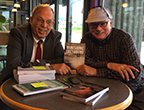 Book Signings
Book Signings Facebook Profile and Facebook Page
Facebook Profile and Facebook Page Active Social Media Participation
Active Social Media Participation Ebook Cards
Ebook Cards The Great Alaska Book Fair: October 8, 2016
The Great Alaska Book Fair: October 8, 2016


 Costco Book Signings
Costco Book Signings eBook Cards
eBook Cards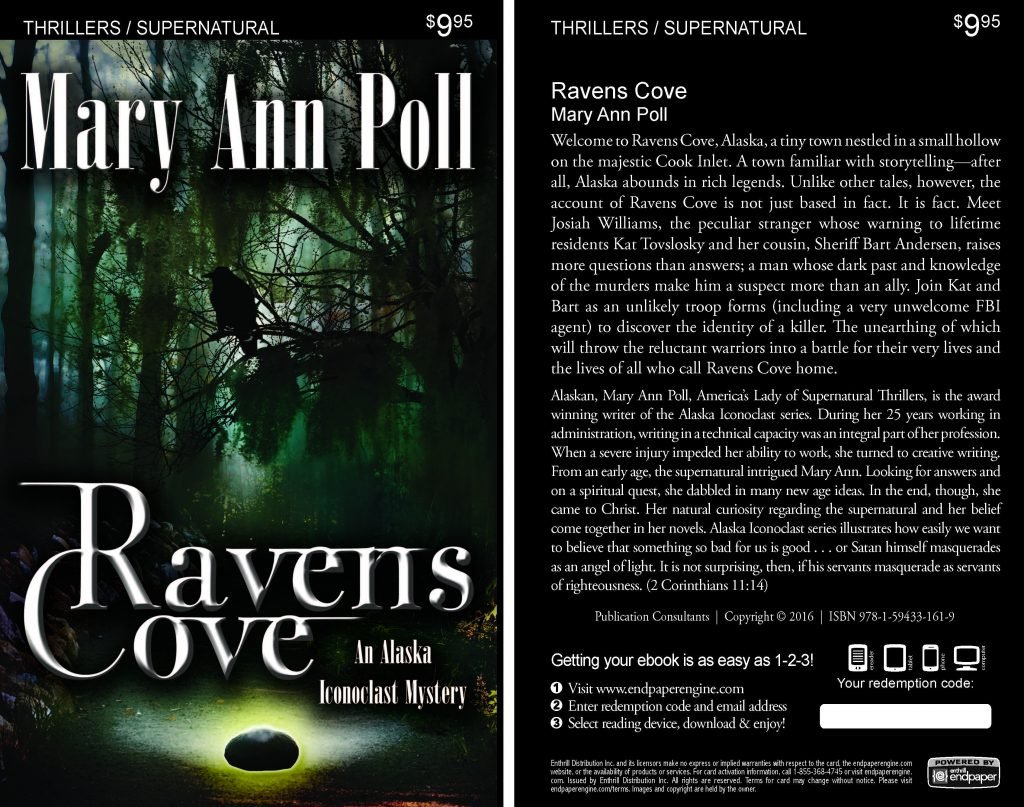

 Benjamin Franklin Award
Benjamin Franklin Award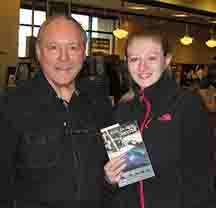 Jim Misko Book Signing at Barnes and Noble
Jim Misko Book Signing at Barnes and Noble
 Cortex is for serious authors and will probably not be of interest to hobbyists. We recorded our Cortex training and information meeting. If you’re a serious author, and did not attend the meeting, and would like to review the training information, kindly let us know. Authors are required to have a Facebook author page to use Cortex.
Cortex is for serious authors and will probably not be of interest to hobbyists. We recorded our Cortex training and information meeting. If you’re a serious author, and did not attend the meeting, and would like to review the training information, kindly let us know. Authors are required to have a Facebook author page to use Cortex. Correction:
Correction: This is Publication Consultants’ motivation for constantly striving to assist authors sell and market their books. ACM is Publication Consultants’ plan to accomplish this so that our authors’ books have a reasonable opportunity for success. We know the difference between motion and direction. ACM is direction! ACM is the process for authors who are serious about bringing their books to market. ACM is a boon for serious authors, but a burden for hobbyist. We don’t recommend ACM for hobbyists.
This is Publication Consultants’ motivation for constantly striving to assist authors sell and market their books. ACM is Publication Consultants’ plan to accomplish this so that our authors’ books have a reasonable opportunity for success. We know the difference between motion and direction. ACM is direction! ACM is the process for authors who are serious about bringing their books to market. ACM is a boon for serious authors, but a burden for hobbyist. We don’t recommend ACM for hobbyists.

 We’re the only publisher we know of that provides authors with book signing opportunities. Book signing are appropriate for hobbyist and essential for serious authors. To schedule a book signing kindly go to our website, <
We’re the only publisher we know of that provides authors with book signing opportunities. Book signing are appropriate for hobbyist and essential for serious authors. To schedule a book signing kindly go to our website, < We hear authors complain about all the personal stuff on Facebook. Most of these complaints are because the author doesn’t understand the difference difference between a Facebook profile and a Facebook page. Simply put, a profile is for personal things for friends and family; a page is for business. If your book is just a hobby, then it’s fine to have only a Facebook profile and make your posts for friends and family; however, if you’re serious about your writing, and it’s a business with you, or you want it to be business, then you need a Facebook page as an author. It’s simple to tell if it’s a page or a profile. A profile shows how many friends and a page shows how many likes. Here’s a link <> to a straight forward description on how to set up your author Facebook page.
We hear authors complain about all the personal stuff on Facebook. Most of these complaints are because the author doesn’t understand the difference difference between a Facebook profile and a Facebook page. Simply put, a profile is for personal things for friends and family; a page is for business. If your book is just a hobby, then it’s fine to have only a Facebook profile and make your posts for friends and family; however, if you’re serious about your writing, and it’s a business with you, or you want it to be business, then you need a Facebook page as an author. It’s simple to tell if it’s a page or a profile. A profile shows how many friends and a page shows how many likes. Here’s a link <> to a straight forward description on how to set up your author Facebook page.



 Mosquito Books has a new location in the Anchorage international airport and is available for signings with 21 days notice. Jim Misko had a signing there yesterday. His signing report included these words, “Had the best day ever at the airport . . ..”
Mosquito Books has a new location in the Anchorage international airport and is available for signings with 21 days notice. Jim Misko had a signing there yesterday. His signing report included these words, “Had the best day ever at the airport . . ..”


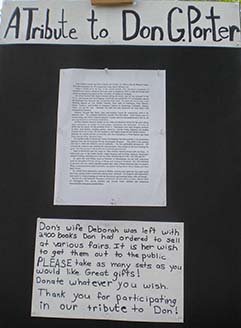
 The Lyin Kings: The Wannabe World Leaders
The Lyin Kings: The Wannabe World Leaders
 Time and Tide
Time and Tide


 ReadAlaska 2014
ReadAlaska 2014 Readerlink and Book Signings
Readerlink and Book Signings
 2014 Independent Publisher Book Awards Results
2014 Independent Publisher Book Awards Results

 Bonnye Matthews Radio Interview
Bonnye Matthews Radio Interview
 Rick Mystrom Radio Interview
Rick Mystrom Radio Interview When he published those overseas blogs as the book The Innocents Abroad, it would become a hit. But you couldn’t find it in bookstores.
When he published those overseas blogs as the book The Innocents Abroad, it would become a hit. But you couldn’t find it in bookstores. More NetGalley
More NetGalley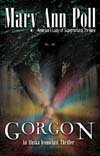 Mary Ann Poll
Mary Ann Poll
 Bumppo
Bumppo
 Computer Spell Checkers
Computer Spell Checkers Seven Things I Learned From a Foreign Email
Seven Things I Learned From a Foreign Email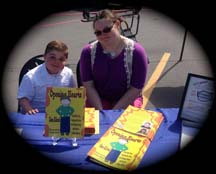 2014 Spirit of Youth Awards
2014 Spirit of Youth Awards Book Signings
Book Signings


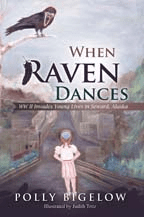 Blog Talk Radio
Blog Talk Radio Publication Consultants Blog
Publication Consultants Blog Book Signings
Book Signings

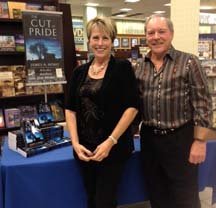

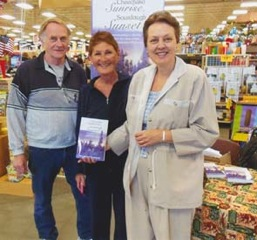 Don and Lanna Langdok
Don and Lanna Langdok Ron Walden
Ron Walden Book Signings Are Fun
Book Signings Are Fun Release Party Video
Release Party Video
 Erin’s book,
Erin’s book,  Heather’s book,
Heather’s book,  New Books
New Books